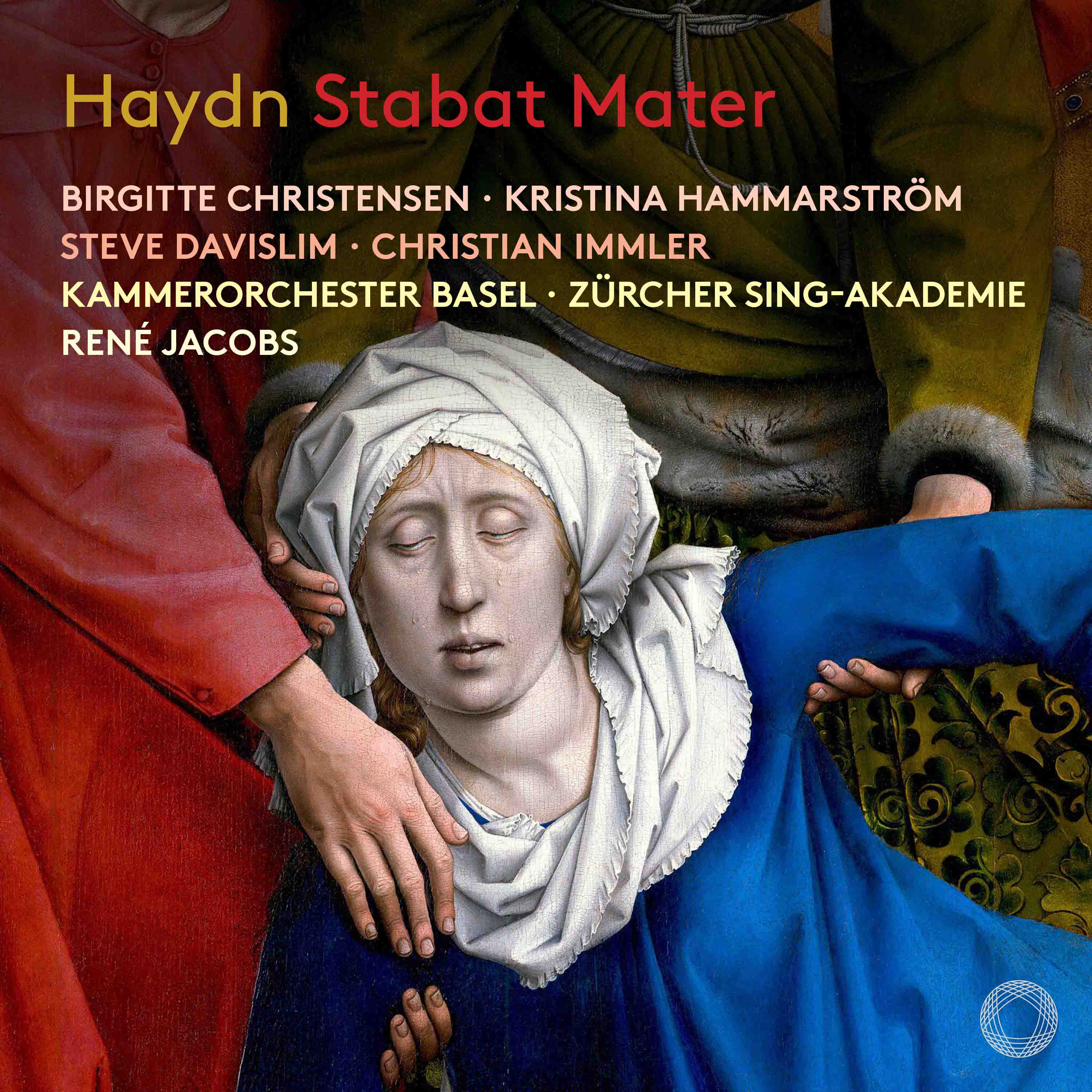René Jacobs conducts Haydn’s Stabat Mater
A beautiful, brilliant recording that deserves each and every accolade it will receive

We are past Easter, to be sure, the time traditionally asspciated with the Stabat Mater, but given that Easter itself is a mobile feast, there's no reason not to take on this fabulous new recording of Haydn’s setting of thsi wonderful text.
We have looked at Pergolesi’s Stabat Mater a couple of times, Rousset”s stunning recording with Sandrine Piau and Christopher Lowry and the Bach/Pergolesi Psalm 51 on Glossa. The Vivaldi setting was explored here. Domenico Scarlatti added his take, while here is Gustavo Gimeno’s recording of Rossini’s setting.
As conductor René Jacobs points out in the following video (in German), Haydn was familiar with Pergolesi’s 1756 setting - and Jacobs claims Haydn surpasses it!.
(... and here’s an extended version of that video with extra interviews).
Haydn’s Stabat Mater was composed in 1767; Jacobs uses an 1803 edition created by Haydn’s apprentice Sigismind Neukomm, with an expanded woodwind section, thus extended in the colouristic range of the work, an expansion commissioned by Papa Haydn himself.
Released with the support of Joseph Haydn Stiftung Basel, this Pentatone recording is a beautiful release, a beauty that underlines the depth of Haydn’s utterance. Try the opening, eight-minte “Stabat mater dolorosa”:
Tenor Steve Davislim is superb in this movement, pure-voiced and lachrymose (as he is in the later “Vidit suum”; the stabbing harmonies for chorus within the last minute of the movement are truly reflecting of the Virgin's pain, while Jacobs’ tempo seems perfect, as is his timing of the final “church” cadence.
Again Jacobs seem to hit the tempo perfectly in “O quam tristis”; Kristina Hammarström is the eloquent soloist:
There is something of a pre-echo to Mozart’s Requiem, surely, in the choral opening of “Quis est homo”; the Zürcher Sing-Akademie is stunning here, darkly concentrated at the opening then tracking Haydn’s harmonic opening-out later in the movement:
... which leads to the most radiant soprano movement (here the wonderful Brigitte Christensen, with pointed orchestral contribution from the Basel Chamber Orchestra):
While Pergolesi’s setting gives a stream of lachrymose beauty, there is more overt drama in Haydn’s Stabat mater: the bass “Pro peccatis’ being a case in point. It is Christian Immler we hear with Jacobs, a singer we have met on a number of occasions, and he is equally impressive here, clear in his delivery of fast-moving passages, lyrical in legato. The orchestra is no fire, too:
As for the chorus, one can hear their excellence - and heft - in the “Eja mater”:
Brigitte Christensen is abaolutely radiant in the “Sancta Mater,” her trills a delight (reciprocally answered in the orchestra); Davislim responds most eloquently. Maybe the most interior movement, though, is “Fac me vere tecum fiore,” and Jacobs finds the corresponding Affekt for this movement perfectly; the recording captures the poignant period instrument tone impeccably:
The breezier “Virgo virginum” is revalatory in this performance - the original instrments really show the solourful nature of the orchestration, supporting this soloist’s movement (all four are used, and when they merge into a quartet, leading to a choral explosion, the result is magical:
Teh sheer fire of “Flammis orcis ne succendor” took me by surprise. This is Haydn as you have rarely heard him before, and if you sample one track from this post, listen to this. Immler, too, excels. This is some of the best Haydn we have covered on Classical Explorer, amd that's saying something, given that we took on Jordi Savall's Schöpfung:
It is left to Steve Davislim to ower the temperature in “Fac me cruce custodiri,” which he does with a magnificently open voice (no strain in the upper register) and crowned by a delicious vocal cadenza with perfect trill:
The darkening at “Quando corpus’ (Hammarström initially, then Christensen) is superbly managed - and the clarity of the bassline, too adds to the profundity. But listen to the final, glorious “Paradisi gloria” - Haydn finishes his Stabat Mater in a blaze of light, enhanced by Brigitte Christenden’s clarion - and rekmarkably agile - soprano. And how the bassline speaks powerfully in this recording!:
Here’s a complete live performance by the same forces, recorded around the time of the studio recording:
A beautiful, brilliant recording that deserves each and every accolade it will receive.
At the time of writing the disc is available at a 3% discount at Amazon at the link below. Listening to this recording on the best equipment possible is recommended: through Apple Airpods at the highest resolution the entire experience is beyond criticism.
